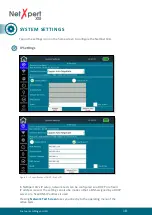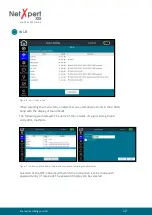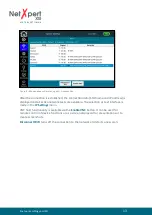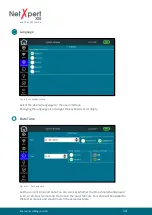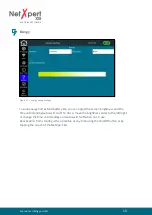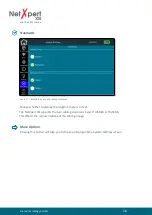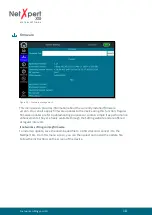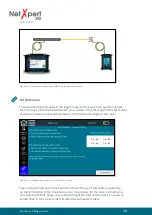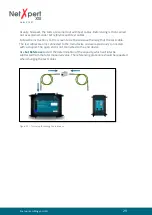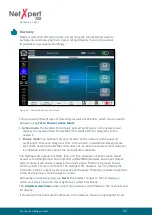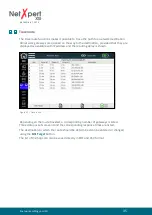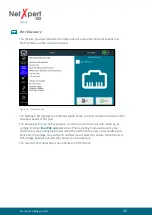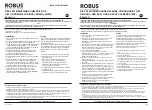
itnetworks.softing.com/XG
24
On the other hand, there is a CSV file as an open format for further processing of the
results, e.g. in MS Excel. Or an XML output as an exchange format for importing the
results into the PC software eXport. The creation of the respective format is started via
Export Report(s) and confirmed after completion.
Even if nothing has been selected in this window, the tests remain stored on the device
in TST format and can be called up at any time.
Cable Type
Tap on the
Cable Type
icon on the left to configure the various test parameters.
Figure 20 – Cable types and test parameters
Here you can select, create and change the cable type to be tested and the desired test
parameters.
The menu screen is divided into three main sections:
On the left are the already implemented templates for the creation of test standards.
These serve as the basis for your own test configurations and extend to include self-
created test specifications. External test standards can also be imported.
At the top right, you can find the details of the test standard currently used that is
assigned to the project currently open. These include the name of the test standard
and the cable constants for length determination, cable capacitance in pf/m and the
propagation factor (NVP value) of the installed cable. In order to be able to determine
the cable length correctly, the device requires the cable-specific values for NVP and
pF/m. Either you take these values from the data sheet of the cable or the NetXpert XG
determines the values on a cable of known length (>30m).
C A B L E T E S T

